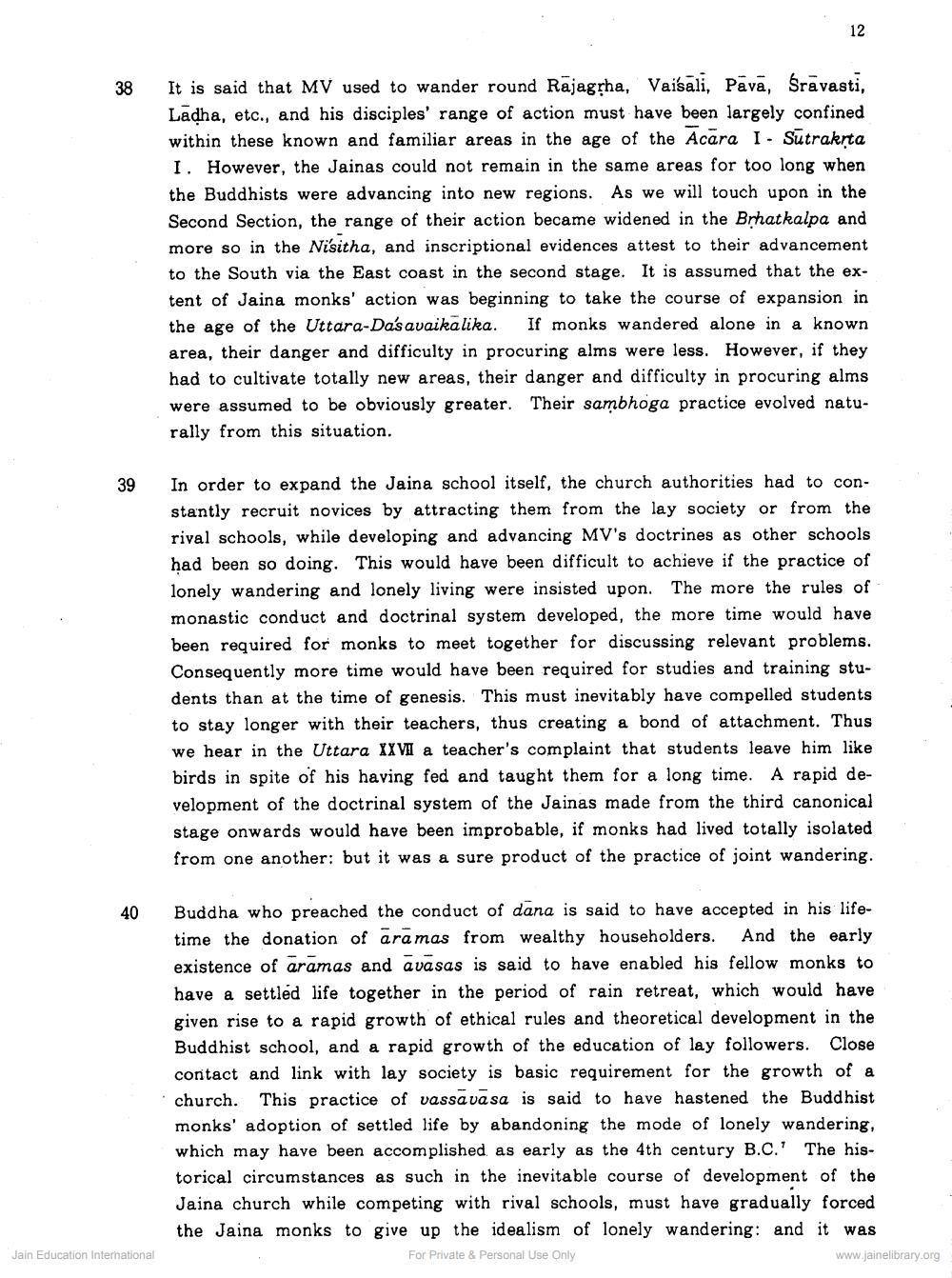________________
38
It is said that MV used to wander round Rajagrha, Vaisali, Pavā, Sravasti, Ladha, etc., and his disciples' range of action must have been largely confined within these known and familiar areas in the age of the Acara I - Sutrakrta I. However, the Jainas could not remain in the same areas for too long when the Buddhists were advancing into new regions. As we will touch upon in the Second Section, the range of their action became widened in the Bịhatkalpa and more so in the Ni'sitha, and inscriptional evidences attest to their advancement to the South via the East coast in the second stage. It is assumed that the extent of Jaina monks' action was beginning to take the course of expansion in the age of the Uttara-Da's avaika lika. If monks wandered alone in a known area, their danger and difficulty in procuring alms were less. However, if they had to cultivate totally new areas, their danger and difficulty in procuring alms were assumed to be obviously greater. Their sambhoga practice evolved naturally from this situation.
In order to expand the Jaina school itself, the church authorities had to constantly recruit novices by attracting them from the lay society or from the rival schools, while developing and advancing MV's doctrines as other schools had been so doing. This would have been difficult to achieve if the practice of lonely wandering and lonely living were insisted upon. The more the rules of monastic conduct and doctrinal system developed, the more time would have been required for monks to meet together for discussing relevant problems. Consequently more time would have been required for studies and training students than at the time of genesis. This must inevitably have compelled students to stay longer with their teachers, thus creating a bond of attachment. Thus we hear in the Uttara XXVI a teacher's complaint that students leave him like birds in spite of his having fed and taught them for a long time. A rapid development of the doctrinal system of the Jainas made from the third canonical stage onwards would have been improbable, if monks had lived totally isolated from one another: but it was a sure product of the practice of joint wandering.
40
Buddha who preached the conduct of dana is said to have accepted in his lifetime the donation of ara mas from wealthy householders. And the early existence of aramas and avasas is said to have enabled his fellow monks to have a settled life together in the period of rain retreat, which would have given rise to a rapid growth of ethical rules and theoretical development in the Buddhist school, and a rapid growth of the education of lay followers. Close contact and link with lay society is basic requirement for the growth of a church. This practice of vassa vasa is said to have hastened the Buddhist monks' adoption of settled life by abandoning the mode of lonely wandering, which may have been accomplished as early as the 4th century B.C.' The historical circumstances as such in the inevitable course of development of the Jaina church while competing with rival schools, must have gradually forced the Jaina monks to give up the idealism of lonely wandering: and it was For Private & Personal Use Only
www.jainelibrary.org
Jain Education International




